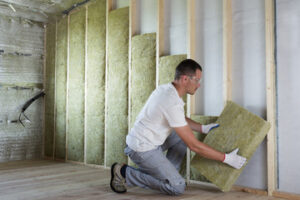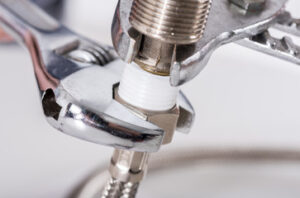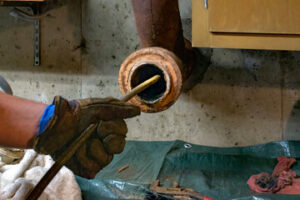When choosing a roofing company, look for one that offers you a detailed proposal and contract that outlines the work to be completed, materials to be used, estimated starting and completion dates, payment procedures, etc.

Other things to consider include how long the company has been in business, whether it’s locally owned and operated, if they use quality materials that are backed by a warranty, and more. Contact Roofing Company Antioch TN for professional help.
Roofing is a demanding trade that can be very rewarding, especially when it’s done well. It can also be a dangerous profession, with falls from heights, injuries from tools, and exposure to the elements being major risks. This kind of work is not for everyone, and it’s important to understand the pros and cons before diving into it.
When choosing a roofing contractor, make sure to ask for a portfolio and examples of their past work. A reputable company will have no problem providing these, and it’s a good way to assess their skill level and capabilities. Look for projects that are similar to your own to see how they would handle the job at hand.
In addition to assessing the quality of the contractor’s workmanship, you should also take into account their communication skills. Ask about how they typically communicate with their clients and whether they provide cost breakdowns if additional work is required. Also, pay attention to their responsiveness during the initial consultation. A contractor that listens carefully to your concerns and addresses them will likely be more reliable throughout the project.
You should also ensure that the roofing contractor is familiar with local building permits and regulations. A knowledgeable roofing contractor will be able to help you obtain the necessary permits for your project and adhere to all relevant standards, which can save you money in the long run by preventing costly fines or legal issues down the road. It’s also worth asking about the safety protocols they follow on-site. A reliable roofing contractor will prioritize safety for themselves, their workers, and your property. They will have the appropriate safety equipment and will adhere to strict industry standards. Ultimately, this will ensure the highest quality results and minimize potential liabilities.
Licenses & Insurance
Licensed roofers often come with workers’ comp and liability insurance, which means that you won’t be on the hook for any medical or legal bills if they get hurt on your property. Handymen don’t have this protection, and they usually also aren’t following any licensing laws, so their work can end up costing you big if they make any mistakes or break any of your property.
Roofing is a dangerous job, but licensed contractors take safety seriously. They know the proper protocols to follow and have the training, equipment, and knowledge to stay safe on your roof. They’re also more likely to use premium materials, so your roof will last longer and require fewer repairs down the road.
Licensing laws vary by state and even city, so be sure to check your local requirements. A roofing license typically includes an exam proving that you’re experienced in the field and understand state law and business practices. You may also have to provide proof of insurance before being granted a license.
In addition to insurance, a licensed contractor will be able to create a contract that spells out all of the aspects of your project including time frames, material costs, and warranty information. This will give you peace of mind knowing that your money is being put toward a quality project and that you won’t be hit with any surprises down the line.
It’s also important to look for a roofing company that has manufacturer accreditation, which shows that they’ve met standards set by the manufacturers of their products. This is a sign that they’re dedicated to their craft and care about the long-term success of their customers’ roofs. A properly installed roof by a licensed roofer will last longer and maintain its warranty, so it’s a smarter financial choice over the long run. You can check for factory accreditation by asking the contractor for proof of insurance and contacting the local building department. You can also check for it on your own by searching online for your state’s licensing board. Licensed roofers are more knowledgeable about roofing, so they’ll be better equipped to find and fix hidden damage that you might not have noticed.
Reviews & References
Checking reviews and references is a crucial step in selecting a roofing contractor. It can provide valuable insight into the contractor’s quality of work, professionalism, and customer service. It’s important to request a list of previous clients and contact them directly to ask about their experience working with the contractor. When asking questions, it’s good to focus on aspects such as project management, adherence to timelines, and overall satisfaction with the results. It’s also helpful to ask about any challenges that arose during the project and how these were handled. Testimonials and photos are another excellent way to assess the quality of a contractor’s work.
A good roofing contractor will be happy to show you examples of their work from previous jobs. They’ll be able to demonstrate their technical skills as well as aesthetically pleasing results.
Warranty
Roofing warranties and guarantees are designed to protect homeowners from unforeseen expenses that may arise as the result of the installation or repair of their roofs. They come in a variety of forms and offer varying degrees of coverage. However, it is important for homeowners to understand what their roofing warranty actually covers and how it works before choosing a contractor to install or repair their roofs.
A material-only warranty only provides coverage for the materials used, and usually has a limited lifespan of between 10 and 20 years. These types of warranties are typically the cheapest, but they only provide protection against manufacturing flaws and don’t include other essential components like underlayment, ventilation products, or barriers against ice and water. A material and labor warranty is a more comprehensive option, but it can still leave you with some uncovered costs down the line. This type of warranty will typically have a capped period for the coverage of the materials, and it can also exclude labor costs from any repairs that may be needed down the road.
The most extensive option available is an NDL warranty, which offers a non-prorated period for the cover of the materials and full coverage for the entire roof system. This type of warranty can cost more, but it is a great option for homeowners that want to have complete peace of mind and assurance that their roofing investment is protected. It is important to note that even the most comprehensive warranties have some exclusions, including acts of nature, unauthorized modifications to the roof, and improper maintenance or inspections.
When choosing a roofing company, it is crucial to find one that offers a workmanship warranty. This warranty will ensure that the company will fix any issues related to the installation of the roof and will not be responsible for any problems that occur after the project is completed. At Turn Key Roofing, we are proud to offer a 5-year workmanship warranty for all full re-roofs, giving our clients peace of mind that they can trust our work.
Another important aspect of a roofing warranty is that it can be transferred to the new homeowner if you decide to sell your home during the warranty period. This is a big selling point for potential buyers and can help reassure them that they are investing in a quality home with a protected roof.


